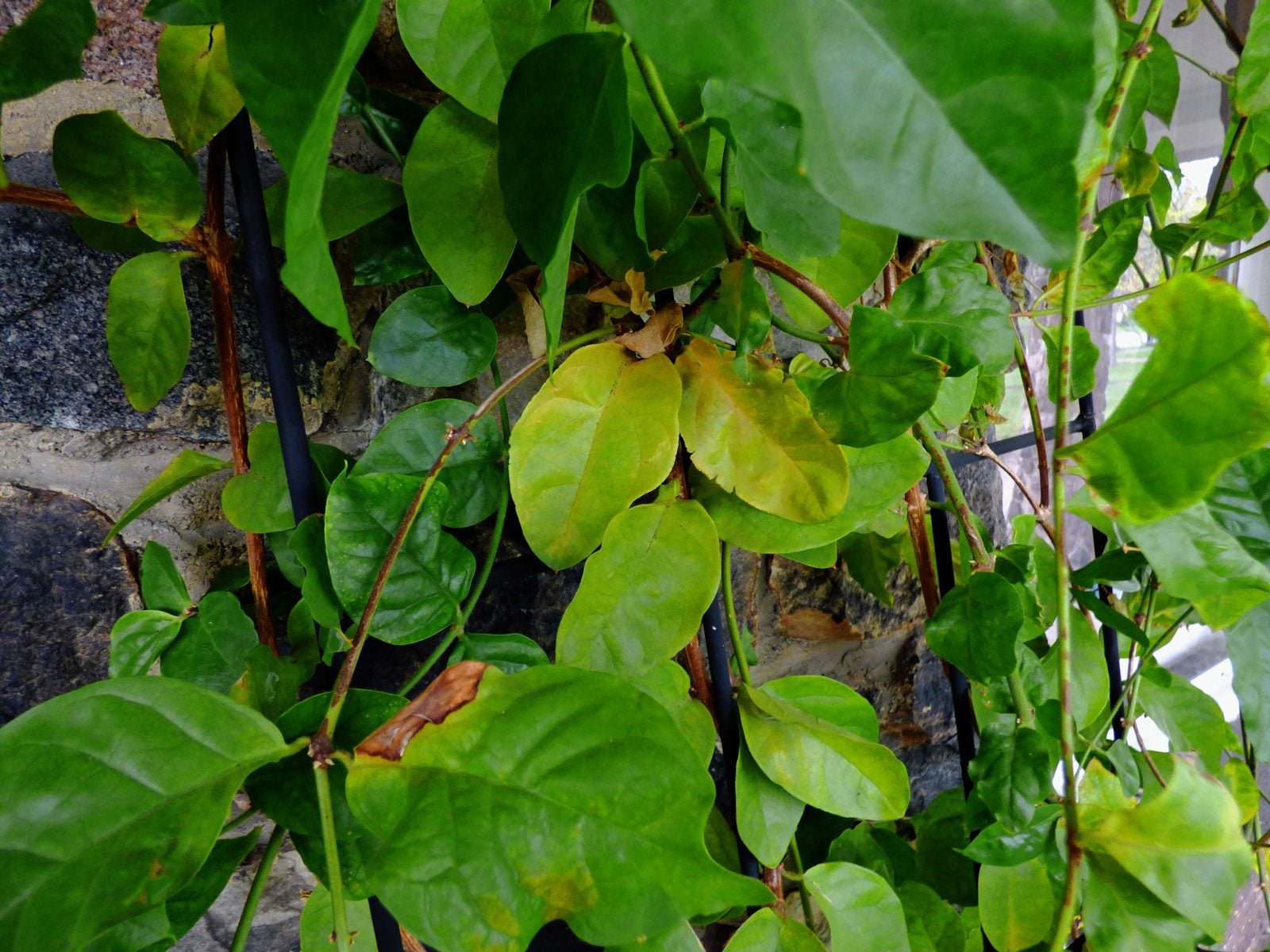Yellowing Jasmine Foliage: Why Are Jasmine Leaves Turning Yellow


Jasmine is a gorgeous vining or shrubby plant that shines in good, well-drained soil and full sunlight, but happily adapts to less than perfect conditions. Although the plant is easy to grow, pests or environmental problems can cause yellow leaves on jasmine plants. Read on to learn about causes for jasmine leaves turning yellow and how to treat yellowing jasmine foliage.
Reasons for Jasmine Leaves Turning Yellow
Below are the most common issues to look at when a jasmine has yellow leaves.
Pests
Pests may be the culprits if your jasmine has yellow leaves. Rule out a pest infestation before you move on to more complicated troubleshooting. If you discover an infestation, treat the pests with insecticidal soap or horticultural oil.
- Scale: Scale is a tiny, sap-sucking pest that attaches itself to jasmine stems and leaves. Scale is recognized by its protective covering, which may be a waxy substance or a hard shell, depending on the type of scale.
- Mealybugs: Mealybugs are tiny pests, easily recognized by a whitish covering that may be mealy, waxy, or cottony. Like scale, the bug causes the leaves to turn yellow by sucking the sap from the foliage. If the plant is small, use a toothpick to pick off the masses by hand.
- Spider Mites: Spider mites are yet another sap-sucking pest. The tiny, dot-like pests are difficult to spot with the native eye, but you will probably notice the telltale webbing on leaves. They are attracted to dry, dusty conditions, so be sure to water properly and keep the leaves clean.
Environmental Problems
Yellowing jasmine foliage can also come from issues within its growing environment, including cultural problems. Nutrient Problems: Jasmine plants are susceptible to chlorosis, a condition that results when the plant lacks nutrients-- usually iron. However, deficiencies in zinc and manganese can also cause chlorosis, which begins with stunted growth and pale green or yellowing leaves, depending on the severity of the deficiency. A foliar spray of chelated nutrients may improve the condition, but probably only temporarily. A soil test is the only sure way to determine soil deficiencies that may be responsible if jasmine leaves are yellow. Improper Watering: It may sound contradictory, but both too much and too little water can cause yellow leaves on jasmine plants. Jasmine performs best in rich, organic, well-drained soil. The soil should be moist, but slightly dry soil is preferably too soggy, waterlogged soil, which can not only cause yellow leaves, but can kill the plant. pH Problems: Yellowing jasmine foliage also occurs with poor soil conditions. Although jasmine is forgiving, it prefers acidic soil. If your soil is highly alkaline, this imbalance may cause yellow leaves. An application of sulfur or addition of woody organic matter can help balance the pH, but be sure to have your soil tested before you attempt to make corrections.
Gardening tips, videos, info and more delivered right to your inbox!
Sign up for the Gardening Know How newsletter today and receive a free copy of our e-book "How to Grow Delicious Tomatoes".

A Credentialed Garden Writer, Mary H. Dyer was with Gardening Know How in the very beginning, publishing articles as early as 2007.
-
 Zinnias On Repeat: 10 Glorious Cut-And-Come-Again Varieties For Endless Summer Bouquets
Zinnias On Repeat: 10 Glorious Cut-And-Come-Again Varieties For Endless Summer BouquetsThese zinnia varieties keep giving all summer, making them the perfect choice for dedicated cutting gardens – or just the occasional homegrown bouquet.
By Ellen Wells
-
 Create A Romantic Garden Straight Out Of Bridgerton: Regency Era Romance In Your Garden
Create A Romantic Garden Straight Out Of Bridgerton: Regency Era Romance In Your GardenTry some romantic garden ideas straight out of Bridgerton. Flowers and gardens in the Regency era were lush and charming and you can get the same look!
By Bonnie L. Grant